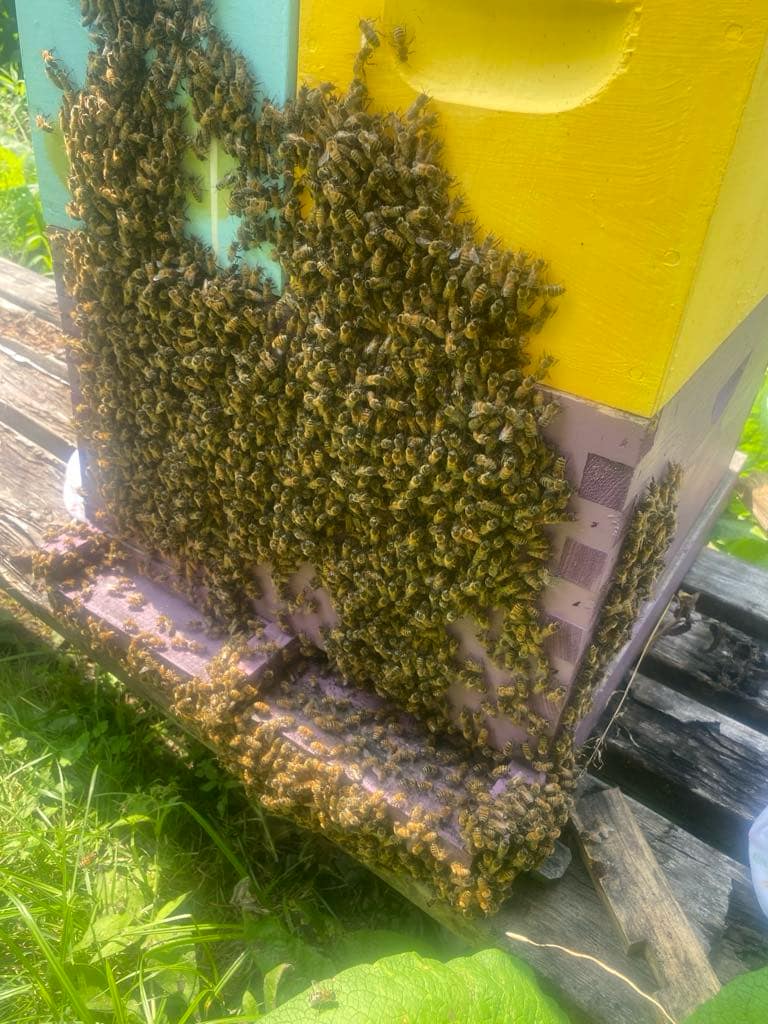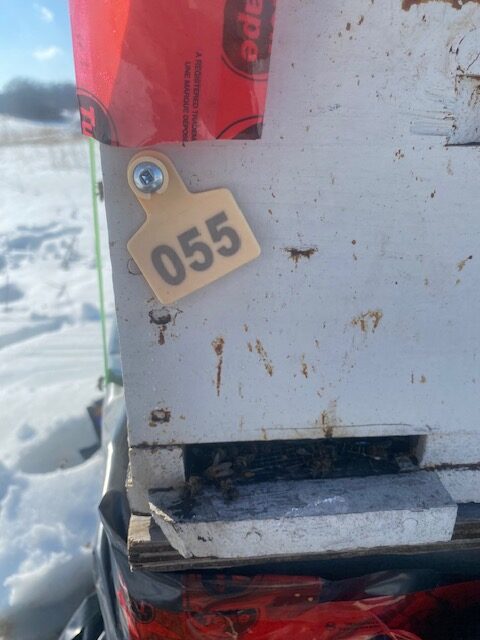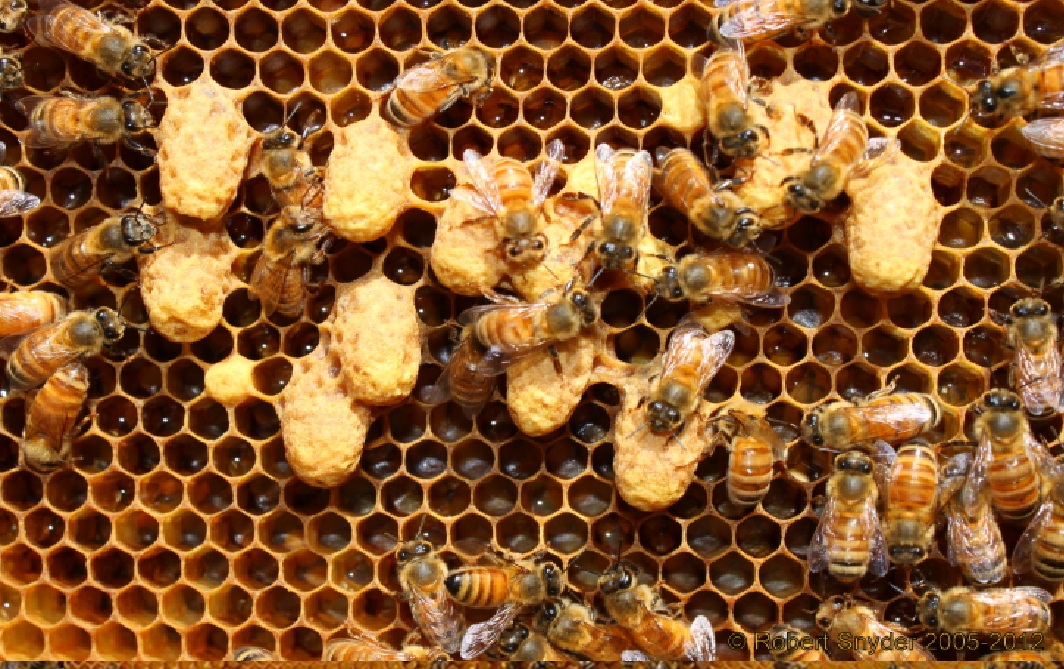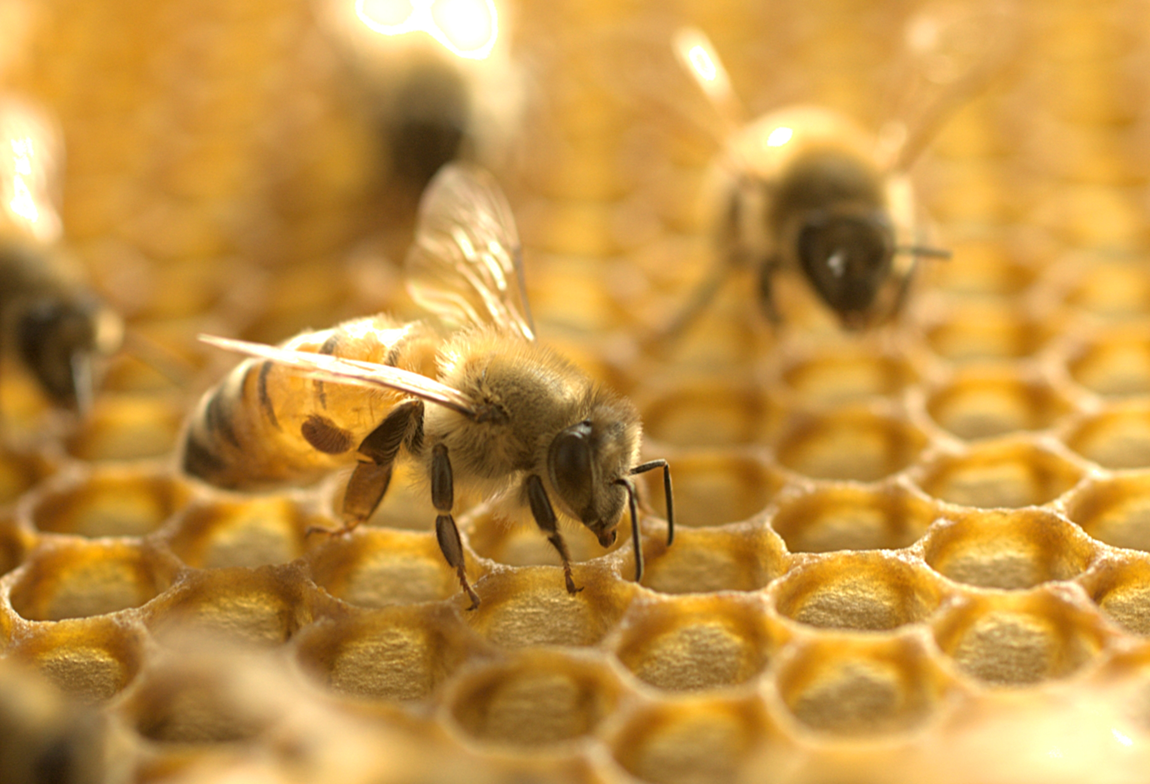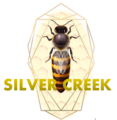The University of Guelph has a fantastic YouTube channel designed to help new beekeepers get started. Their alcohol wash method is almost exactly what I do. To keep results consistent, Suzanne is the only one who does washes in our apiary. There are several ways to test for Varroa Destructor Mite. The most common, and the one that beekeepers say is the most accurate is the alcohol wash.
I still use ½ cup of bees, but I slosh instead of shake, and I slosh for 10 minutes. I suggest that you follow the UoG’s method as it is proven.
Why 1/2 cup or 300 bees? Only because it is easy to do the math. IF you have 4 mites in your wash, then you can guestimate that multiplying by 100 means you have 400 mites in your hive. In 1 month that will be 40000, so it is time to treat.
Powder Sugar Shake
Another method is to replace the alcohol with powdered sugar and shake. After a minute, dump the bees on a white sheet of paper. You can see the mites on the paper.
This is not as accurate. That is only a problem if your a treatment free beekeeper or only treat when the problem is bad.
My thoughts, if you see 2 + mites, treat. You know the shake didn’t give as accurate a result as the alcohol wash, so do not wait until the numbers are as high.
The benefit of this method is that you do not need to kill bees.
Sticky Paper
Another method of testing bees is to put sticky paper on the bottom of your hive for 24 hours. Remove the paper and count the mites.
I have never used this method, so I cannot have an opinion. This can be the least intrusive method of testing.
The sticky papers are available at every bee supply store. I think they are expensive, but you might want to give it a try.
Drone Removal
Varroa prefers drone comb. Adding a medium frame, a green drone frame, or a blank frame will give the bees room to make bigger drone comb. One the drone are laid, remove the comb – and mites.
Drone Count
Most beekeepers remove drones. When you do this take a moment to count the mites. First, mites are fast. You will do your first few counts and think ‘wow’ there are no mites.
Then you will see a mite appear out of no where. It may appear suddenly on your hand, or a done larva that you just cleared. Once you know how fast they move then you will be able to get accurate counts.
We do not remove drones from two of our yards. But we remove drones from the rest of the yards. When we remove them we open the drones and count the mites.
I wait until the drone comb is capped and the caps start to sink and wrinkle.
I set up a white table, and lay the drone comb ‘unopened’ on the table. I use an exactor knife and a pin knife to open the cells, one at a time. I lift the larva out and lay them on the table. The faster I lift them out, the most likely I am to see the mites. They appear easily on the white mite.
Brood Break
When we were trying to become successful ‘no treatment’ beekeepers we swore by brood breaks. As the years went by we realized that the only thing we were doing was slowing down the varroa population growth by a week or two.
Our problem with brood breaks is that the adult varroa mites can live for a long time, right through the winter.
While this may be a viable option for some beekeepers, it didn’t fit our preferred methods.
Picture Below: A healthy Breeder hive bearding on the front and bottom board after we removed the honey supers.
Note: Why do we have funky coloured hives? Because our grand children take the ‘bees need geometric shapes to identify their hive’ to heart. They are the ones who paint the hives.
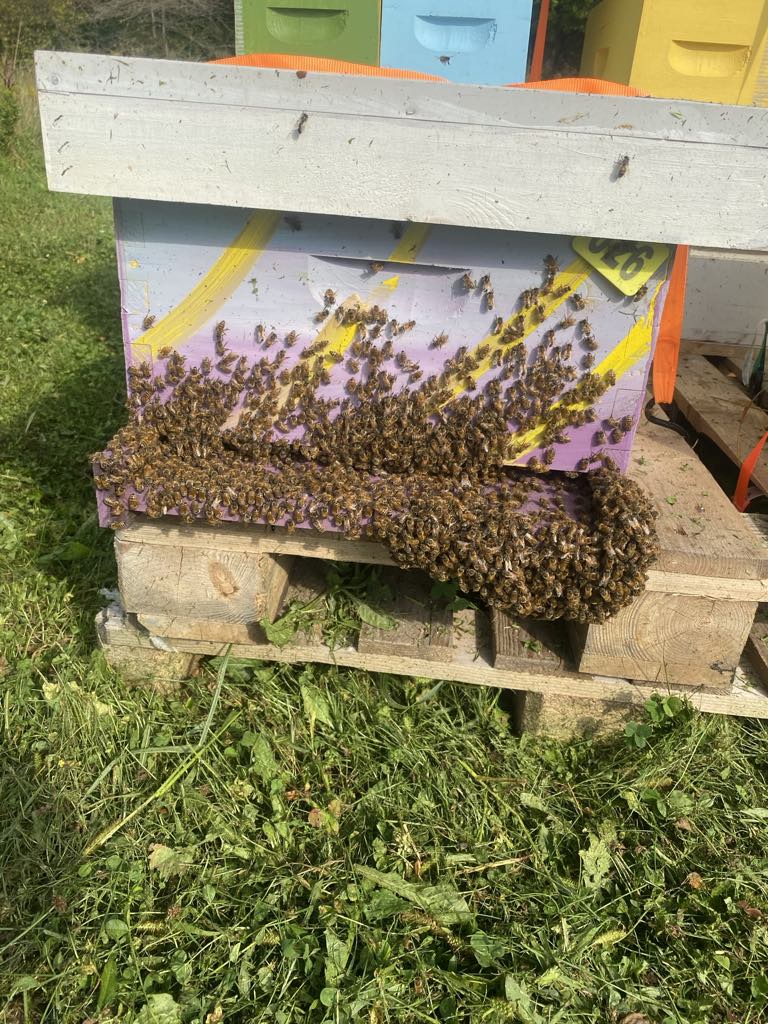
Oxalic Acid – Vaporized or Dribble
Oxalic acid is a natural treatment and our preferred method. We prefer natural treatments over synthetic. The only downside is the suggestion that the acid burns the bees. Also, if they attack the 240 degree Instavap they will die. We often lose 1 to 20 bees that we can count.
I have never used the dribble, but many beekeepers swear by it. We do swear by our Instavap. It is easy to use, and we can do two hives at one time. The only down fall is that we need to wear a full face mask. We also feel we cannot use the vaporizer with student workers in the yard. This slows down the teams.
Formic Pro
This is the only treatment that can be put on a brood box and leave the honey supers on. Formic is a natural chemical that bees are familiar with. Ants produce Formic acid. Some beekeepers let ants live in the hive claiming that the ants eat varroa, and they release Formic. We have had ants move into beehive lids, but have not seen any evidence that they helped the bees.
Formic
This product comes in jugs is put on meat pads like what you see in the Styrofoam container when you buy meat.
It has the same chemical as formic pro but you cannot put it on a hive that has honey supers on.
This is cheaper for a commercial beekeeper but may not be practical for someone with less than 50 hives.
Formic acid (and Formic Pro) are called ‘queen killers’. IF you are a new beekeeper, or do not buy early queens, then I suggest that you do not use Formic until local queens are available, or you can grow out a queen.
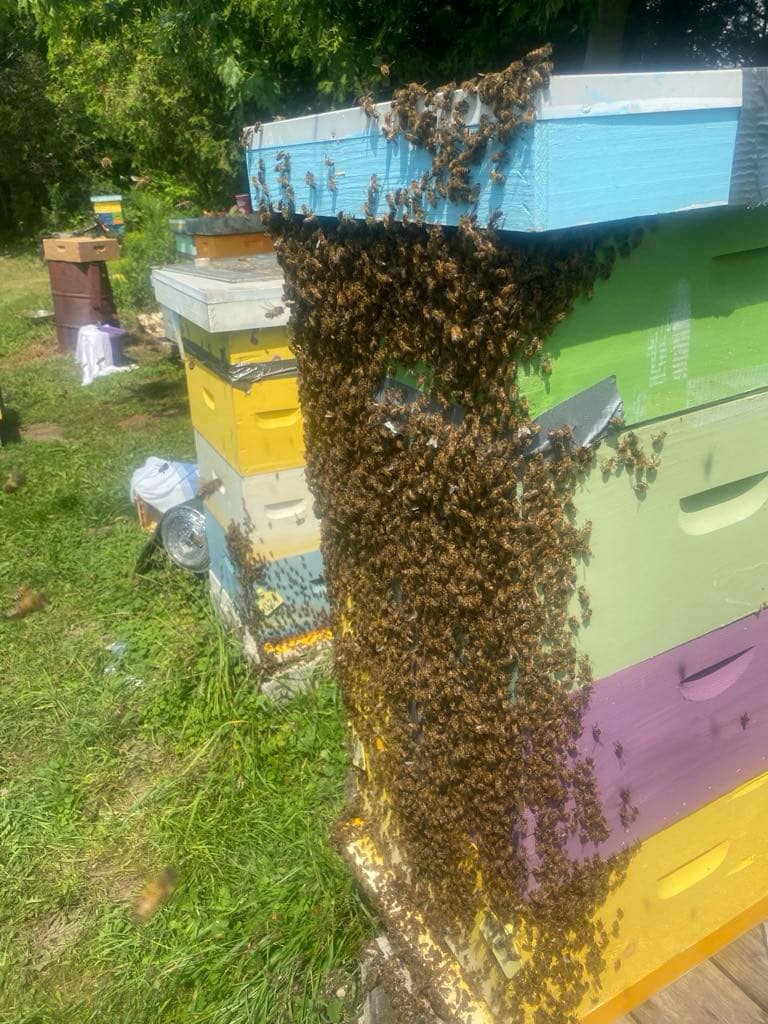
Powdered Sugar
Treatment Free Beekeepers sprinkle powdered sugar. This makes it harder for the varroa mites to hang onto the bees and they fall off.
We do this, even now. The only thing you need to make this work is a screened bottom board. We find that it works better than a solid board. (but, if you have small hive beetle in your area then you will not want a screened bottom board.)
While this is not considered an effective method on it’s own, it does knock mites off. We read several papers, and watched several videos that confirmed that you can knock off about 400 mites. If you do this 2x a month, then you are knocking of up to 800 mites, and preventing the birth of 20-30 000 mites in a month.
Our theory is, ‘every mite gone, is better for the bees.’ We feel that it is a beekeeper’s obligation to give their bees the best.

